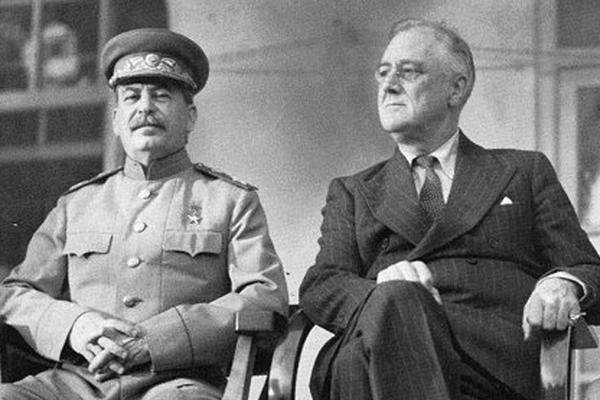(Korean War) The Division of Korea, 1945-1948, Post #14
Prof. Kathryn Weathersby

We’ve seen that when the allies began their discussion of Korea at the Moscow Conference of Foreign Ministers in December 1945, Soviet Foreign Minister Molotov cleverly let US Secretary of State Byrnes be the first to show his hand. Then, having received the unrealistic American proposal, the Soviet delegation drafted a counter-proposal. The Soviet plan used the US formulation to create a process that would ensure that Moscow could block the creation of any government for Korea that would not be “friendly” to the Soviet Union.
The proposal Molotov presented called for the establishment of a provisional government that would “undertake all necessary measures for the development of industry, transportation, and agriculture.” This formulation answered American concerns about the economic issues they raised at the beginning of the discussion. At the same time, it protected Soviet interests by stipulating that the creation of a government would precede rather than follow the resolution of these practical issues. Conflating Byrnes’ recommendation for a unified administration with the vague American idea for trusteeship, Molotov proposed that in forming this provisional government, Koreans would be assisted by a Joint Commission composed of representatives of the Soviet and American commands. Before the members of Joint Commission would submit recommendations on the provisional government to their respective governments, they would consult with Korea’s “democratic parties and social organizations,” a phrase that was the key to Moscow’s strategy.
The Secretary of State responded to Molotov’s proposal only by insisting that the Joint Commissions’ recommendations would be presented to each of the four powers, who would then, as the Soviets had proposed, form a trusteeship lasting up to five years. Byrnes thoughtlessly accepted the composition of the Joint Commission. Since the Soviets would have an equal number of votes as the Americans, they could veto any definition of “democratic parties and social organizations” that might include persons hostile to the USSR. As George Kennan had predicted, Byrnes accepted the Soviet draft nearly unchanged “in the interests of promoting an agreement.”
The slightly amended Soviet proposal was then incorporated into the communique the conference released on December 27. Since this agreement provided a means for Moscow to preserve the appearance of cooperating with the US while simultaneously preventing the establishment of an “unfriendly” government for all of Korea, the Moscow Conference Agreement soon acquired the status of holy writ, piously intoned for the remaining lifetime of the Soviet government.
However, before the Moscow Conference agreement could protect Soviet interests, General Shtykov would have to persuade the Communist Party leadership in Seoul to support the hated trusteeship. The documentary record of how they accomplished this task is not available, but numerous sources reported that party leader Pak Hon-yong traveled to the Soviet zone around December 28 and returned to Seoul on January 2 ready to persuade the party to support the Moscow agreement.
Shtykov’s men also took steps to prevent expressions of opposition to the agreement in their zone. When they released the communique to the press they substituted “guardianship” for the hated word “trusteeship.” They also replaced the alarming reference to “developing an agreement relating to Korean trusteeship by the Four Powers for a maximum period of five years” with the simple statement that the Joint Commission’s proposals “will be turned over to the four guardians.” These precautions, combined with the governing mechanisms already in place and the exodus of non-communist political activists to the South, succeeded in muting public protest in the Soviet zone.
In the American zone, however, news of the communique immediately raised passionate opposition. Angry crowds filled the streets, shops closed, and Americans were ordered to stay inside. In the next post we will examine how the Soviets used opposition to the agreement in the South to guarantee that no provisional government would be created unless it was made up of persons reliably pro-Moscow.
[Sources: Robert Byrnes, Memoir; Hak S. Paik, “North Korean State Formation, 1945-1950”; Foreign Relations of the United States, 1945, Volume VIII; Richard Lauterbach, Danger from the East.]
outstanding again!!
thank you
Post good
Hi ★★★ Resteem your post for free ★★★ Make the post more
popular and find the new followers + 10 upvote ★★★ Send minimum
SBD or STEEM to @cloudymoon , URL in the memo ★ Service Active
잘 보고 가겠습니다.^^
좋은 하루 되시길 바랄게요